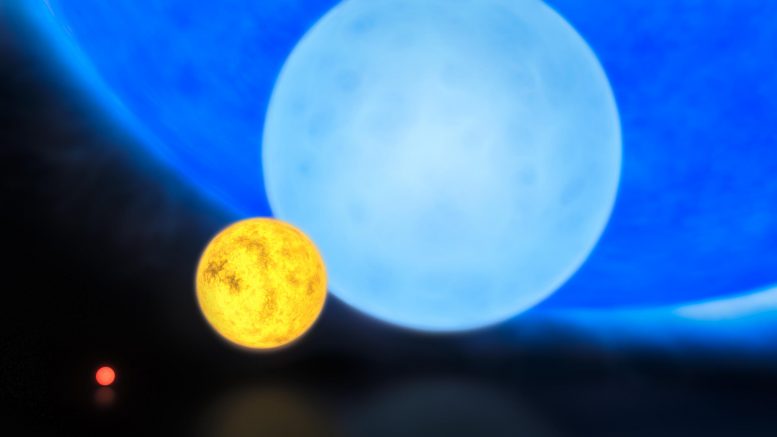
This artist’s impression of different mass stars; from the smallest “red dwarfs”, weighing in at about 0.1 solar masses, to massive “blue” stars weighing around 10 to 100 solar masses. While red dwarfs are the most abundant stars in the Universe, it’s the massive blue stars that contribute the most to the evolution of stars clusters and galaxies. Credit: ESO/M. Kornmesser
Massive stars are larger than about 10 times the mass of the Sun and are born far less often than their low mass counterparts. However, they contribute the most to the evolution of stars clusters and galaxies. From enriching their surroundings in supernova explosions, to altering the dynamics of their systems, massive stars are the precursors of many vivid and energetic phenomena in the Universe.
The best tool to study massive stars are ‘detailed stellar evolution codes’: computer programs which can calculate both the interior structure and the evolution of these stars. Unfortunately, detailed codes are computationally expensive and time-consuming—it can take several hours to compute the evolution of just a single star. For this reason, it’s impractical to use these codes for modeling stars in complex systems, such as globular star clusters, which can contain millions of interacting stars.
To address this problem, a team of scientists led by the ARC Centre of Excellence for Gravitational Wave Discovery (OzGrav) developed a stellar evolution code called METhod of Interpolation for Single Star Evolution (METISSE). Interpolation is a method for estimating a quantity based on nearby values, such as estimating the size of a star based on the sizes of stars with similar masses. METISSE uses interpolation to quickly calculate the properties of a star at any instant by using selected stellar models computed with detailed stellar evolution codes.
Lightning fast, METISSE can evolve 10,000 stars in less than 3 minutes. Most importantly, it can use different sets of stellar models to predict the properties of stars—this is extremely important for massive stars. Massive stars are rare, and their complex and short lives make it difficult to accurately determine their properties. Consequently, detailed stellar evolution codes often have to make various assumptions while computing the evolution of these stars. The differences in the assumptions used by the different stellar evolution codes can significantly impact their predictions about the lives and the properties of the massive stars.
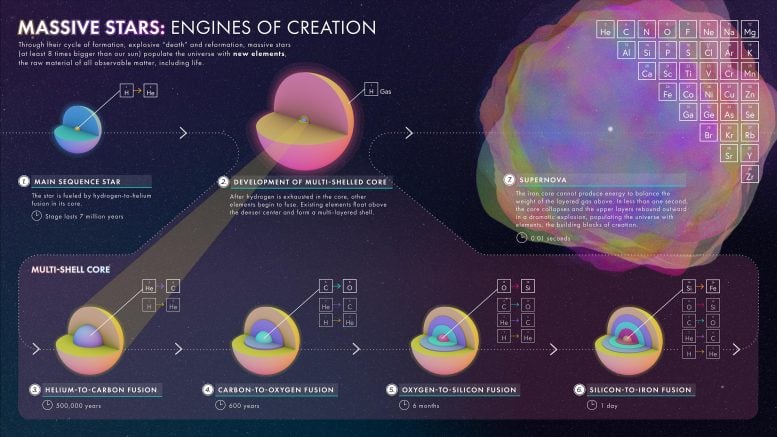
This illustration demonstrates how a massive star (at least 8 times bigger than our sun) fuses heavier and heavier elements until exploding as a supernova and spreading those elements throughout space. Credit: NASA, ESA, and L. Hustak (STScI)
In their recently published study in Monthly Notices of the Royal Astronomical Society, the OzGrav researchers used METISSE with two different sets of state-of-the-art stellar models: one computed by the Modules for Experiments in Stellar Astrophysics (MESA), and the other by the Bonn Evolutionary Code (BEC).
Poojan Agrawal—OzGrav researcher and the study’s lead author—explains: ‘We interpolated stars that were between 9 and 100 times the mass of the Sun and compared the predictions for the final fates of these stars. For most massive stars in our set, we found that the masses of the stellar remnants (neutron stars or black holes) can vary by up to 20 times the mass of our Sun’.
When the stellar remnants merge, they create gravitational waves—ripples in space and time—that scientists can detect. Therefore, this study’s results will have a huge impact on future predictions in gravitational-wave astronomy.
Agrawal adds: ‘METISSE is just the first step in uncovering the part massive stars play in stellar systems such as star clusters, and already the results are very exciting.’
Reference: “The fates of massive stars: exploring uncertainties in stellar evolution with metisse” by Poojan Agrawal, Jarrod Hurley, Simon Stevenson, Dorottya Szécsi and Chris Flynn, 6 August 2020, Monthly Notices of the Royal Astronomical Society.
DOI: 10.1093/mnras/staa2264




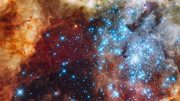
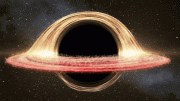
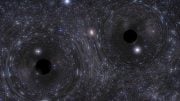
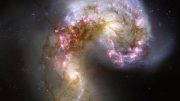

Be the first to comment on "Stellar Evolution Code “METISSE” Offers New Insights Into the Lives of Massive Stars"